The city of Rome is steeped in a legacy of faith, where the early Christians’ defiance against the might of the Roman Empire forged the very foundations of Christianity. Among the many who bore witness to their faith through martyrdom, some names are widely recognized – Saint Peter and Saint Paul stand as pillars of Christian history. Yet, behind these towering figures are countless others whose stories have slipped through the cracks of time.
The stories of these lesser-known Christian martyrs are no less inspiring than the more famous ones, and their lives and deaths offer valuable insights into the faith in ancient Rome. These lesser-known Christian martyrs, though not as celebrated, are no less significant in Christian history. Their stories of steadfast faith, unwavering courage, and ultimate sacrifice offer a reminder of the cost of belief in a world that was often hostile to their convictions.
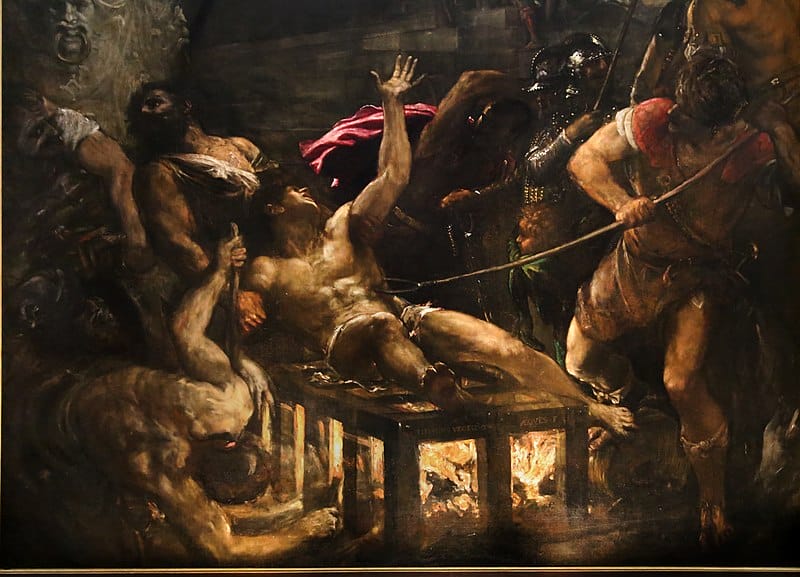
Source: Sailko, CC BY 3.0 https://creativecommons.org/licenses/by/3.0, via Wikimedia Commons
Key Takeaways
- The stories of lesser-known Christian martyrs of Rome offer valuable insights into the faith and the historical context of ancient Rome.
- Christian martyrs were persecuted and killed for their beliefs, but their stories have been passed down through the ages and have become an important part of Christian history.
- By exploring the lives and deaths of these Christian martyrs, readers can gain a deeper understanding of the faith and the sacrifices made by those who were willing to die for their beliefs.
Historical Context of Christian Martyrdom in Ancient Rome
Early Christian Persecutions
The early Christian Church faced significant persecution under the Roman Empire. The persecution of Christians began, logically, in the first century AD and continued for several centuries. The Roman authorities saw Christianity as a threat to their power, and as a result, Christians were often subjected to brutal treatment.
One of the first recorded persecutions of Christians took place under the Emperor Nero in AD 64. Nero blamed the Christians for the Great Fire of Rome and used this as an excuse to launch a campaign of persecution against them. Christians were arrested, tortured, and executed in public.
The persecution of Christians continued under subsequent emperors, including Domitian, Trajan, and Decius. Christians were often accused of crimes such as atheism, cannibalism, and incest. They were also blamed for natural disasters and other calamities.
The Role of the Roman Empire
The Roman Empire played a significant role in the persecution of Christians. The Roman authorities saw Christianity as a threat to their power and as a challenge to the traditional Roman religion. As a result, they viewed Christians with suspicion and often subjected them to harsh treatment.
The Roman authorities used a variety of methods to persecute Christians. These included torture, imprisonment, and execution. Christians were often forced to renounce their faith or face punishment. Many Christians refused to renounce their faith and were martyred as a result.
Despite the persecution, Christianity continued to grow and spread throughout the Roman Empire. The faith was embraced by people from all walks of life, including slaves, women, and the poor. The Christian martyrs became symbols of faith and courage, inspiring others to follow in their footsteps.
Profiles of Lesser-Known Martyrs
The Silent Song of Saint Cecilia
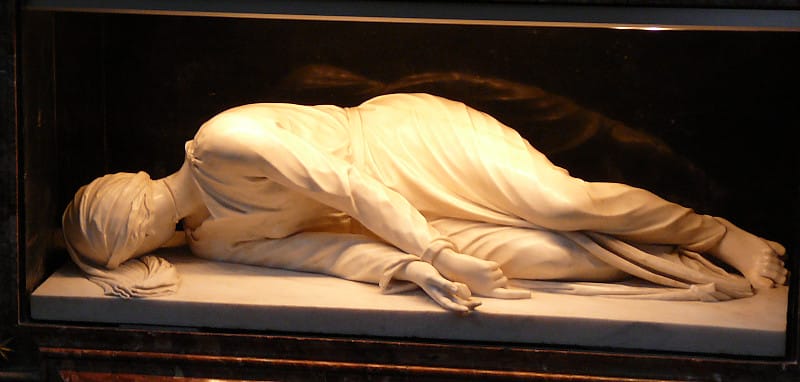
Source: Dickstracke at English Wikipedia, CC BY 1.0 https://creativecommons.org/licenses/by/1.0, via Wikimedia Commons
Saint Cecilia, the patroness of musicians, was an early Christian martyr who suffered death for her faith in Rome. She is one of the seven women, in addition to the Blessed Virgin Mary, commemorated by name in the Canon of the Mass.
According to legend, Cecilia was a noblewoman who had taken a vow of virginity and was forced into marriage with a pagan named Valerian. She converted her husband to Christianity, and together, they devoted their lives to helping the poor and the sick. When they were arrested and sentenced to death for their faith, Cecilia sang hymns of praise to God, even as she was being tortured. Her captors attempted to suffocate her in the steam of a bathhouse, but she emerged unscathed. Eventually, she was beheaded, but not before converting many of her tormentors to Christianity.
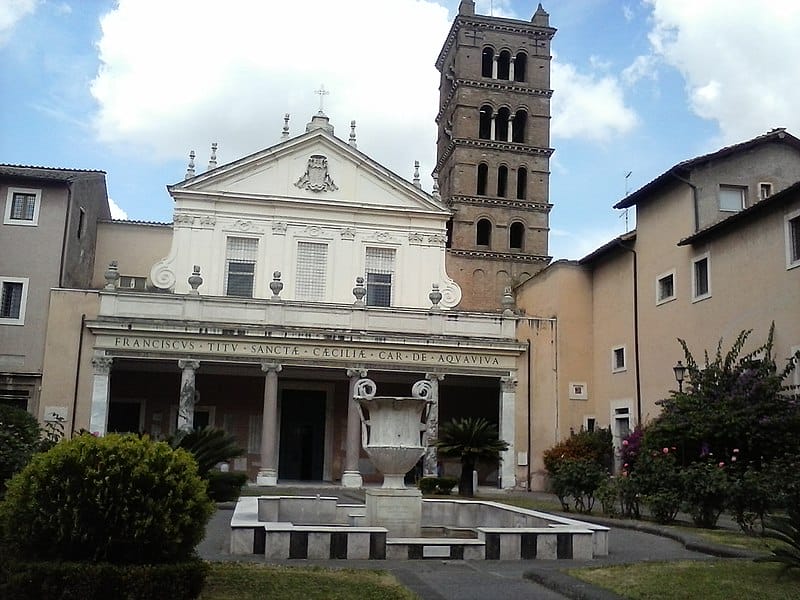
Saint Cecilia is venerated as a martyr, and her feast day is celebrated on November 22. She is often depicted in art holding a harp or an organ, symbolizing her patronage of music. Many churches and institutions have been named after her, including the Basilica of Saint Cecilia in Trastevere, Rome, which is dedicated to her memory.
Although Saint Cecilia is one of the most revered Christian martyrs, her story is not as well-known as some of the others. Nevertheless, her faith and devotion to God continue to inspire people to this day.
The Hidden Strength of Saint Prisca
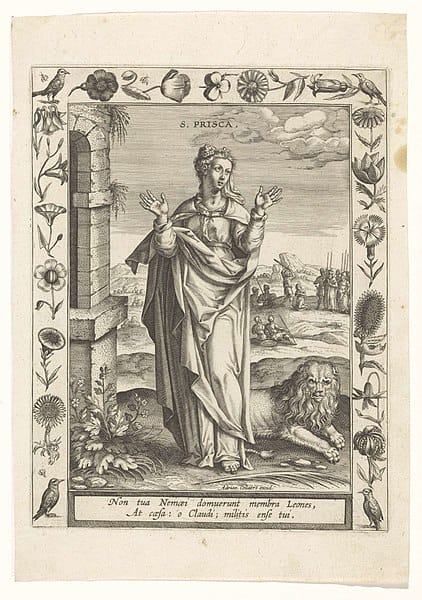
Saint Prisca is one of the lesser-known Christian martyrs of Rome, but her story is no less inspiring than those of more famous saints. She was born in the third century AD and lived during the reign of Emperor Claudius II, who was known for his persecution of Christians.
Prisca was a devout Christian and was known for her unwavering faith, even in the face of persecution. She was arrested and brought before the emperor, who demanded that she renounce her faith and worship the Roman gods. Prisca refused and was sentenced to death. She was taken to the Colosseum, where she was martyred for her faith. Despite the brutal nature of her death, Prisca remained steadfast in her faith until the very end.
Today, the Church of St. Prisca on the Aventine Hill in Rome is dedicated to her memory. Saint Prisca is a reminder of the strength and courage of the early Christian martyrs, who were willing to die for their faith rather than renounce it. Her story is an inspiration to Christians around the world and a testament to the power of faith.
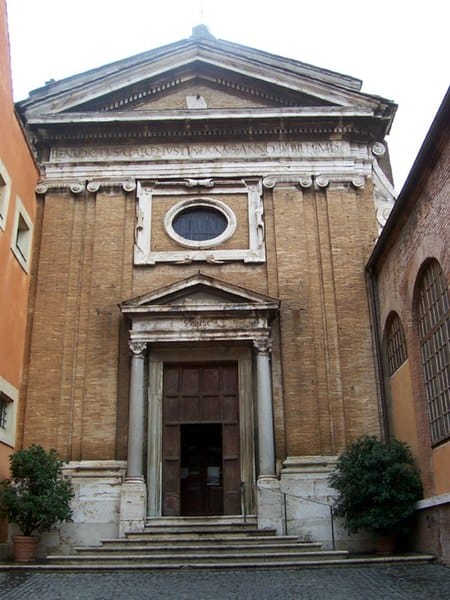
In the Catholic Church, Saint Prisca is venerated as one of the Christian martyrs who gave their lives for their faith. Her feast day is celebrated on January 18th.
The Unseen Sacrifice of Saint Agnes
Saint Agnes is one of the lesser-known Christian martyrs of Rome, but her story is one of the most poignant. She was a young girl, only 12 or 13 years old when she was martyred for her faith. Despite her youth, she is remembered as a symbol of purity and dedication.
Agnes was born into a wealthy family in Rome in the early 3rd century. She was a devout Christian from a young age and refused to renounce her faith, even in the face of persecution. As a result, she was sentenced to death by beheading.
Her martyrdom was a powerful symbol of the Christian faith, and she is remembered as one of the most courageous and faithful saints in the Catholic Church.
The Silent Witness of Saint Tarcisius
Saint Tarcisius lived during the reign of Emperor Valerian. He was a young boy who was entrusted with the task of carrying the Eucharist to Christians who were in prison. His martyrdom is a testament to his unwavering faith and his willingness to die for his beliefs.
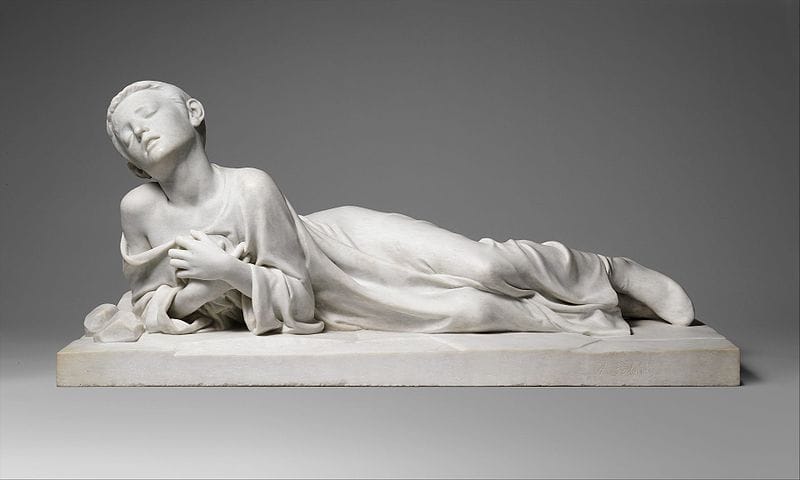
Saint Tarcisius was a member of the early Christian community in Rome, which was persecuted by the Roman authorities. He was chosen to carry the Eucharist to Christians who were in prison because of his devotion to the Church and his strong faith. He knew that he was risking his life by carrying the Eucharist, but he was willing to do so because he believed that it was his duty as a Christian.
When Saint Tarcisius was on his way to deliver the Eucharist, he was accosted by a group of pagans who demanded to know what he was carrying. He refused to tell them and tried to flee, but he was caught and beaten to death. He died a martyr’s death, and his body was buried in a Christian cemetery. Saint Tarcisius is venerated as a saint by the Catholic Church, and his martyrdom is celebrated on August 15.
The Unheard Cries of Saint Lawrence
Saint Lawrence, one of the seven deacons of Rome, was martyred in the year 258 AD during the reign of Emperor Valerian. He was known for his compassion towards the poor and his unwavering faith in Christianity.
The story of Saint Lawrence’s martyrdom is one of the most important in Christian history. According to legend, he was ordered by the Roman authorities to hand over the treasures of the church. Instead, he distributed them to the poor and presented them to the authorities, saying that they were the true treasures of the church. As punishment, he was sentenced to death by being roasted alive on a gridiron.
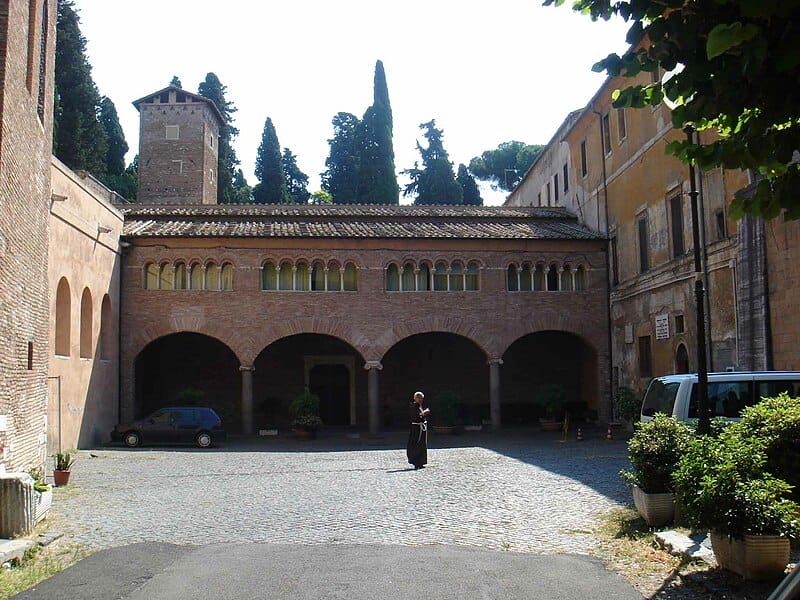
The Basilica of San Lorenzo fuori le Mura in Rome is dedicated to Saint Lawrence and houses his relics. The church is one of the seven pilgrimage churches of Rome and is visited by thousands of pilgrims every year.
Despite his popularity, there are many aspects of Saint Lawrence’s life and death that are not well-known. For instance, it is not widely known that Saint Lawrence was one of the seven deacons of Rome who were responsible for the distribution of food and aid to the poor. It is also not well-known that his death was part of a larger persecution of Christians under Emperor Valerian.
His story has inspired many churches and cathedrals around the world to be dedicated to him, and his legacy continues to be celebrated by the Catholic Church and other Christian denominations.
The Forgotten Valor of Saint Pudentiana
Saint Pudentiana was a lesser-known Christian martyr of Rome who lived during the 2nd century AD. She was the daughter of Saint Pudens, a Roman senator who converted to Christianity and opened his home to the apostles Peter and Paul. Saint Pudentiana is believed to have died a martyr’s death, but little is known about the circumstances of her death. She is venerated as a saint in the Catholic Church, and her feast day is celebrated on May 19th.
The Basilica of Santa Pudenziana in Rome is dedicated to Saint Pudentiana and her brother Saint Novatus, who was also a martyr. The church is one of the oldest in Rome, dating back to the 4th century AD. It is known for its beautiful mosaics, including one of the oldest depictions of Christ in Western art.
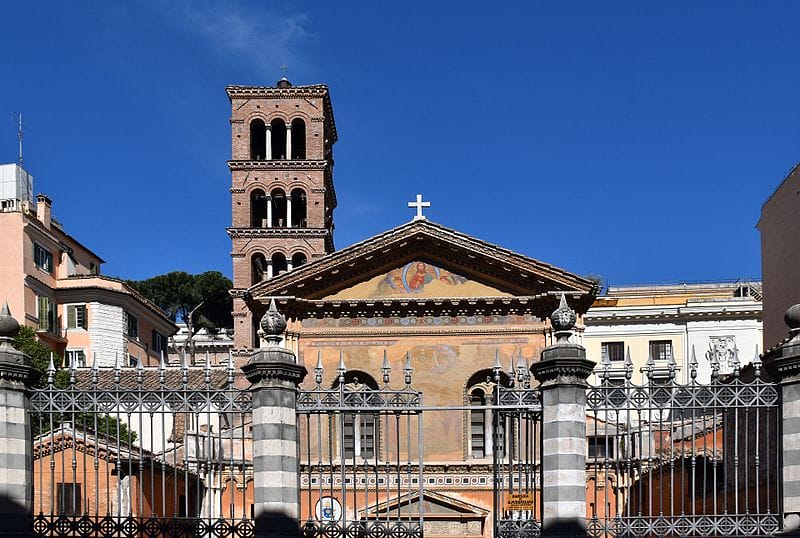
Despite her relatively unknown status, Saint Pudentiana played an important role in early Christianity. Pudentiana, along with her sister Praxedes, was known for her devotion to the Christian faith and her efforts to care for the poor and the persecuted Christians in Rome. The sisters are believed to have provided shelter to Christians in their home, which also served as one of the earliest places of Christian worship in the city.
Pudentiana’s life was marked by quiet acts of charity and piety, but it is her death that sealed her legacy. Tradition holds that she died as a result of the grief and persecution she endured for her faith, and she was buried alongside her father and sister in the family crypt.
People Also Ask:
Who were some lesser-known martyrs of the early Roman church?
The early Roman church was home to many Christian martyrs who were persecuted for their faith. Some Christian martyrs include Perpetua and Felicity, who were executed in 203 AD, and Polycarp, who was burned at the stake in 155 AD.
How did the obscure Christian martyrs of Rome meet their fate?
The lesser-known Christian martyrs of Rome were persecuted and executed for their faith in various ways. Some were beheaded, while others were burned at the stake or thrown to wild animals in the Colosseum.
What are the stories behind the martyrdom of Rome’s less celebrated Christians?
The stories behind the martyrdom of Rome’s less celebrated Christians are often filled with courage and faith in the face of persecution. Many of these Christian martyrs refused to renounce their faith, even when faced with torture and death.
Can you name some of the early Christian martyrs who are not widely known today?
Some of the early Christian martyrs who are not widely known today include Saint Agatha, who was martyred in 251 AD, and Saint Maximilian Kolbe, who was martyred in Auschwitz during World War II.
What acts led to the martyrdom of lesser-known Christians in ancient Rome?
The martyrdom of lesser-known Christians in ancient Rome was often the result of their refusal to renounce their faith or to worship the Roman gods. This was considered an act of treason against the Roman state and was punishable by death.
Which unsung Christian martyrs played a significant role in the history of Roman Christianity?
Many unsung Christian martyrs played a significant role in the history of Roman Christianity, including Saint Lawrence, who was martyred in 258 AD, and Saint Agnes, who was martyred in 304 AD. These Christian martyrs inspired many others to follow in their footsteps and to remain faithful to their beliefs, even in the face of persecution.
Who are the saint martyrs of Rome?
These first Christian martyrs in the city of Rome are remembered and honored by the Church today. Saints Peter and Paul were among these Christian martyrs, but numerous unknown others also gave their lives. Some of them were sewn into the bellies of animals while still alive and then fed to wild dogs to be torn to pieces.
Hello, my name is Vladimir, and I am a part of the Roman-empire writing team.
I am a historian, and history is an integral part of my life.
To be honest, while I was in school, I didn’t like history so how did I end up studying it? Well, for that, I have to thank history-based strategy PC games. Thank you so much, Europa Universalis IV, and thank you, Medieval Total War.
Since games made me fall in love with history, I completed bachelor studies at Filozofski Fakultet Niš, a part of the University of Niš. My bachelor’s thesis was about Julis Caesar. Soon, I completed my master’s studies at the same university.
For years now, I have been working as a teacher in a local elementary school, but my passion for writing isn’t fulfilled, so I decided to pursue that ambition online. There were a few gigs, but most of them were not history-related.
Then I stumbled upon roman-empire.com, and now I am a part of something bigger. No, I am not a part of the ancient Roman Empire but of a creative writing team where I have the freedom to write about whatever I want. Yes, even about Star Wars. Stay tuned for that.
Anyway, I am better at writing about Rome than writing about me. But if you would like to contact me for any reason, you can do it at contact@roman-empire.net. Except for negative reviews, of course. 😀
Kind regards,
Vladimir
